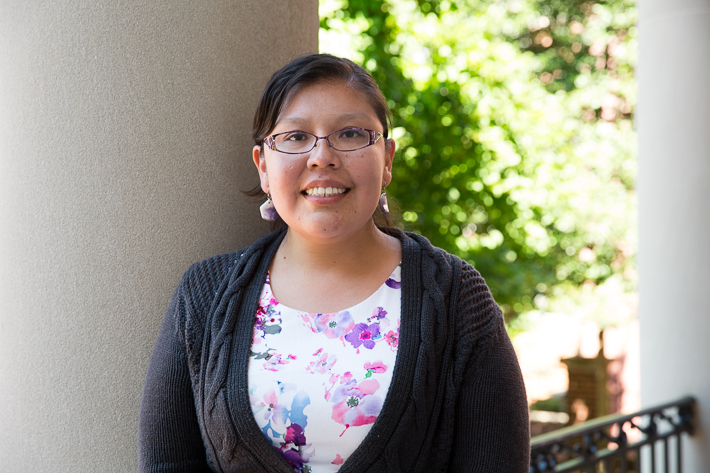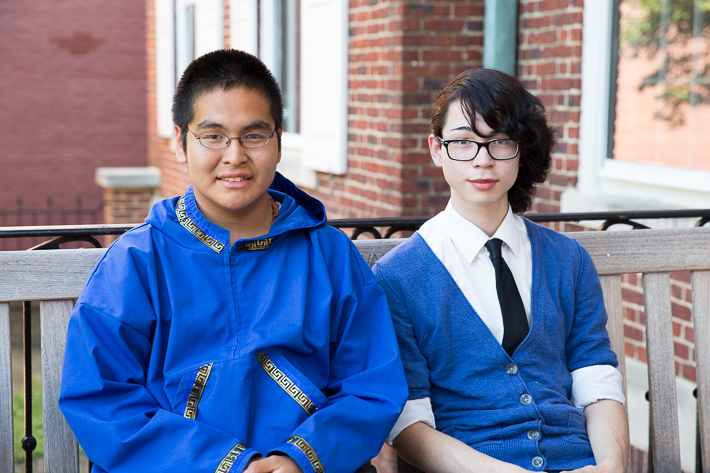By James Irwin
It took Robert Charles four plane rides and nearly 11 hours to reach Washington, D.C. Once he arrived, he aimed to make the most of his stay in the nation’s capital.
Meeting the president of the United States? Well, that was an added perk.
Mr. Charles and 10 other Native American high school students spent most of their July at the George Washington University as the first cohort of the INSPIRE Initiative, an offshoot of the Native American Political Leadership Program that provides a semester-in-Washington experience for students looking to better their communities. INSPIRE extends the residency to high school students who are interested in Native American political leadership, like Mr. Charles, who is Inupiat.
“It was eye-opening for me,” the 16-year-old from Alaska said of his three-week residency. “The experience changed my perspective on native and tribal politics.”
INSPIRE, which is funded by a grant from the AT&T Foundation, provides policy training for Native American high school students through the College of Professional Studies, said Kraynal Alfred, a member of the Navajo Nation and the project director for the Native American Political Leadership Program. Native Americans, she said, deal with a host of issues, including higher student dropout rates, alcoholism, substance abuse, suicide and poverty. INSPIRE students researched and developed recommendations for these issues during their residency. Some of the problems are universal among U.S. minority populations; others are Native American specific. Solutions can be complicated because of the political status of tribes in the United States.
 Kraynal Alfred, a member of the Navajo Nation and project director for the Native American Political Leadership Program, said a focus of the INSPIRE Initiative is to connect native youth with native professionals and college students so they can get advice from peers and elders. "We’re all about mentoring and empowerment," she said. "This is about teaching students how to engage in the political process, especially from the perspective of their community."
Kraynal Alfred, a member of the Navajo Nation and project director for the Native American Political Leadership Program, said a focus of the INSPIRE Initiative is to connect native youth with native professionals and college students so they can get advice from peers and elders. "We’re all about mentoring and empowerment," she said. "This is about teaching students how to engage in the political process, especially from the perspective of their community."
Native students navigate through a complex education system of schools operated by the Bureau of Indian Education, tribal-operated schools, and public schools, Ms. Alfred said. Many are first-generation high school graduates looking to apply to college. INSPIRE aims to provide a college experience while empowering students to tackle an issue important community issue.
The education gap varies based on location, Ms. Alfred said. Around half of the country’s 566 tribes are located in Alaska. The geographic isolation provides a barrier to education, said Ethan Dan, 17. He is Yupik and lives in Anchorage, Alaska’s largest city, which has “a pretty good Native American education system that works with the public school network,” he said. In contrast, Mr. Charles is from tiny Koyuk, Alaska—a village of about 350 people—where there is little funding for public programs, like organized recreation.
“We have old jerseys and run-down public facilities,” he said. “We could get hurt playing basketball but we still play because we love the sport.”
That’s an issue he plans to tackle. He wants to open a youth center in Koyuk to help curb juvenile crime.
“I would hope a youth center would open their eyes like this program in Washington has opened mine,” Mr. Charles said.
Two of our students shook @BarackObama's hands at the @WhiteHouse My Brothers Keeper event! Amazing young leaders! pic.twitter.com/5PxV530sr0
— Inspire Native Teens (@NAPLPInspire) July 21, 2014Mr. Charles and Mr. Dan shake hands with President Obama during the announcement expanding the My Brother's Keeper Initiative.
Students in the INSPIRE cohort spent their residency taking a political management course taught by Graduate School of Political Management alumnus Mellor Willie, M.S. '10, and learning about campaign and communications strategies. They visited with several policymakers during their stay, including Rep. Don Young (R-Alaska) and were in town for an announcement expanding the White House’s My Brother’s Keeper initiative, which now includes a Native American Task Force led by the National Congress of American Indians. It was during this announcement that Mr. Dan and Mr. Charles met President Obama.
“It was an amazing experience,” Mr. Dan said. “It was interesting to see the similarities and differences between the problems Native Americans are dealing with and the problems other minorities are dealing with that have an impact on youth.”
Young-adult empowerment and mentoring—focus points for My Brother’s Keeper—are also emphasized in the semester-long NAPLP and three-week INSPIRE Initiative, Ms. Alfred said. The programs highlight the need to introduce students to issues at an early age, and provide them methods to find solutions.
“There are many topic worth creating a dialogue about, from what’s going on with the Washington football team nickname to what students experience in their own schools—racism, stereotypes and stigmas to being native,” Ms. Alfred said. “We’re teaching that it’s OK to embrace your culture and speak out in defense of it.”


